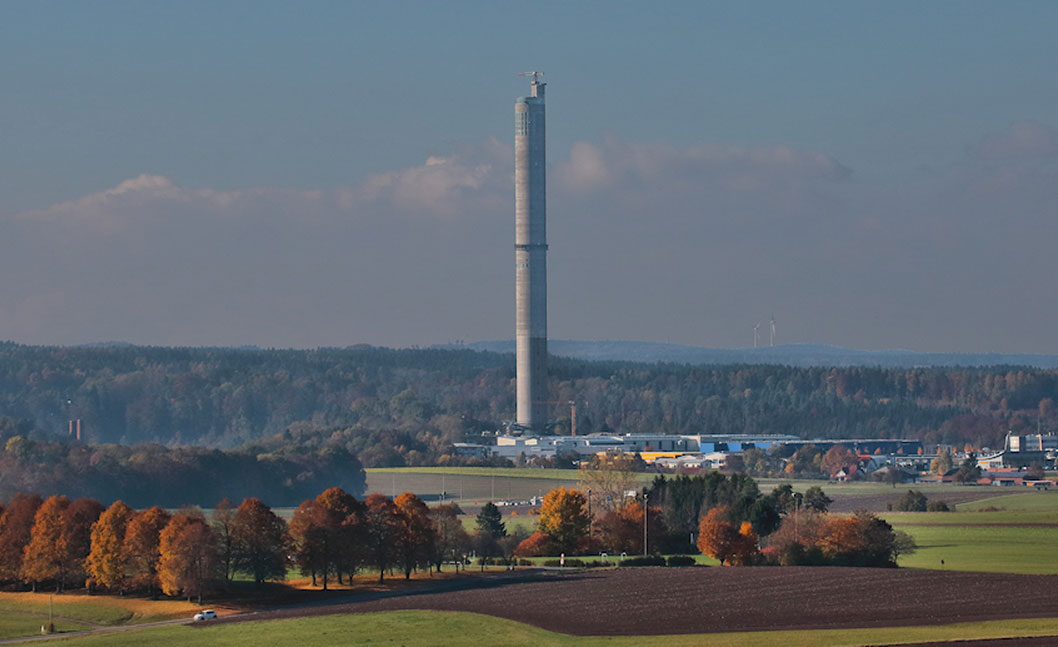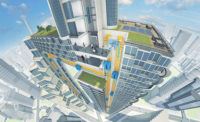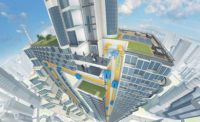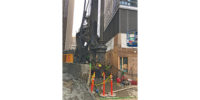Elevator research and development inside the substantially complete 246-meter-tall thyssenkrupp Elevator AG test and observation tower in Rottweil, Germany, will begin next year, though the lift company says it is delaying installation of the tower’s 17,000-sq-m polytetrafluoroethylene fiberglass skin to conduct more durability tests on the material.
The opening of the viewing platform to the public is also expected next year, after the PTFE skin is completed.
thyssenkrupp is currently installing elevator equipment inside the test shafts and expects to begin the first tests of the company’s MULTI—the first ropeless elevator, by the spring or summer. Instead of cables, the system uses magnetic levitation technology, similar to that in thyssenkrupp’s Transrapid train.
Like a subway, MULTI has several cars in a single shaft, traveling along side rails. Tyssenkrupp figures the multicab system can increase shaft capacity by up to 50% and cut in half the elevator system's footprint. Details on cost are not available.
MULTI is best suited for tall buildings and buildings with unusual shapes, says the company. Shafts can be vertical, horizontal or inclined. Of a total of 12 vertical shafts in the Rottweil tower, three connected vertical shafts are dedicated to testing the multiple-cab maglev system.
Currently, there are two elevators operating in the tower. One is the firefighter elevator, which moves as fast as 4 m per second. The other elevator provides access to the observation deck. Featuring glass-walled cabs that offer panoramic views, the latter elevator runs up to 8 m per second.
The deck, at 232 m, will be the highest in Germany. Next in line is the 224-m Europe Tower in Frankfurt am Main.
Tower general contractor Zublin is scheduled to hand over the tower to thyssenkrupp this month.






Post a comment to this article
Report Abusive Comment